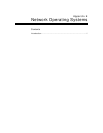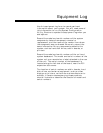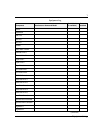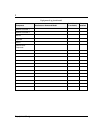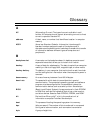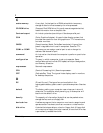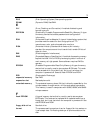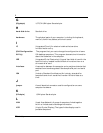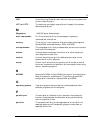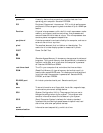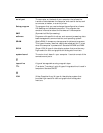
2
Glossary
C
cache memory
A very fast, limited portion of RAM set aside for temporary
storage of data for direct access by the microprocessor.
CD-ROM drive
(Compact Disk ROM drive) A type of mass storage device that
reads information from a compact disk.
Centronics port
An industry standard parallel port. See also parallel port.
CGA
(Color Graphics Adapter) A type of video display system that
provides low-resolution text and graphics on TTL monochrome
and color monitors.
CMOS
(Complimentary Metal-Oxide Semiconductor) A type of low-
power integrated circuit used in computers. See also TTL.
COM1 or COM2
The name you can assign a serial port to set or change its
address. See also serial port.
command
An instruction that directs the computer to perform a particular
operation.
configuration
The way in which a computer is set up to operate. Some
configurable options include CPU speed, serial port designation,
and memory allocation.
coprocessor
See math coprocessor.
CPU
(Central Processing Unit) See microprocessor.
CRT
(Cathode-Ray Tube) The type of video display used in monitors
for desktop computers.
D
DC
(Direct Current) The type of current available in the
rechargeable battery packs used in portable computers. See also
AC.
default
The factory setting your computer uses unless you instruct it
otherwise. For example, when powering up, the computer will
boot from the default drive.
density
The capacity of information (bytes) that can be packed onto a
storage device, such as a floppy disk.
device driver
A software program that a computer must use to recognize and
operate certain hardware, such as a mouse or a video monitor.
disk drive
A device that stores data on a hard or floppy disk. A floppy disk
drive requires a floppy disk to be inserted; a hard disk drive has
a permanently encased hard disk.




